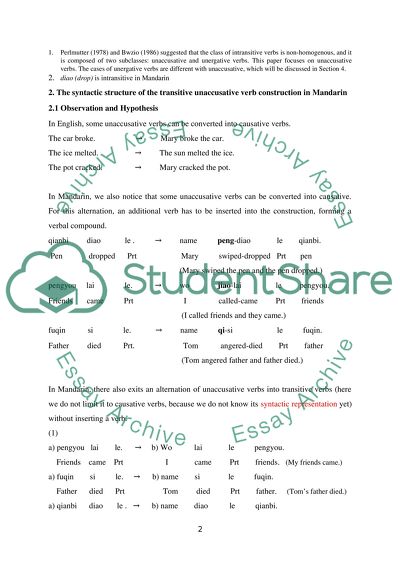Cite this document
(“Transitive unaccusative1 verb constructions in Mandarin Essay”, n.d.)
Retrieved from https://studentshare.org/humanitarian/1693780-transitive-unaccusative1-verb-constructions-in-mandarin
Retrieved from https://studentshare.org/humanitarian/1693780-transitive-unaccusative1-verb-constructions-in-mandarin
(Transitive Unaccusative1 Verb Constructions in Mandarin Essay)
https://studentshare.org/humanitarian/1693780-transitive-unaccusative1-verb-constructions-in-mandarin.
https://studentshare.org/humanitarian/1693780-transitive-unaccusative1-verb-constructions-in-mandarin.
“Transitive Unaccusative1 Verb Constructions in Mandarin Essay”, n.d. https://studentshare.org/humanitarian/1693780-transitive-unaccusative1-verb-constructions-in-mandarin.


